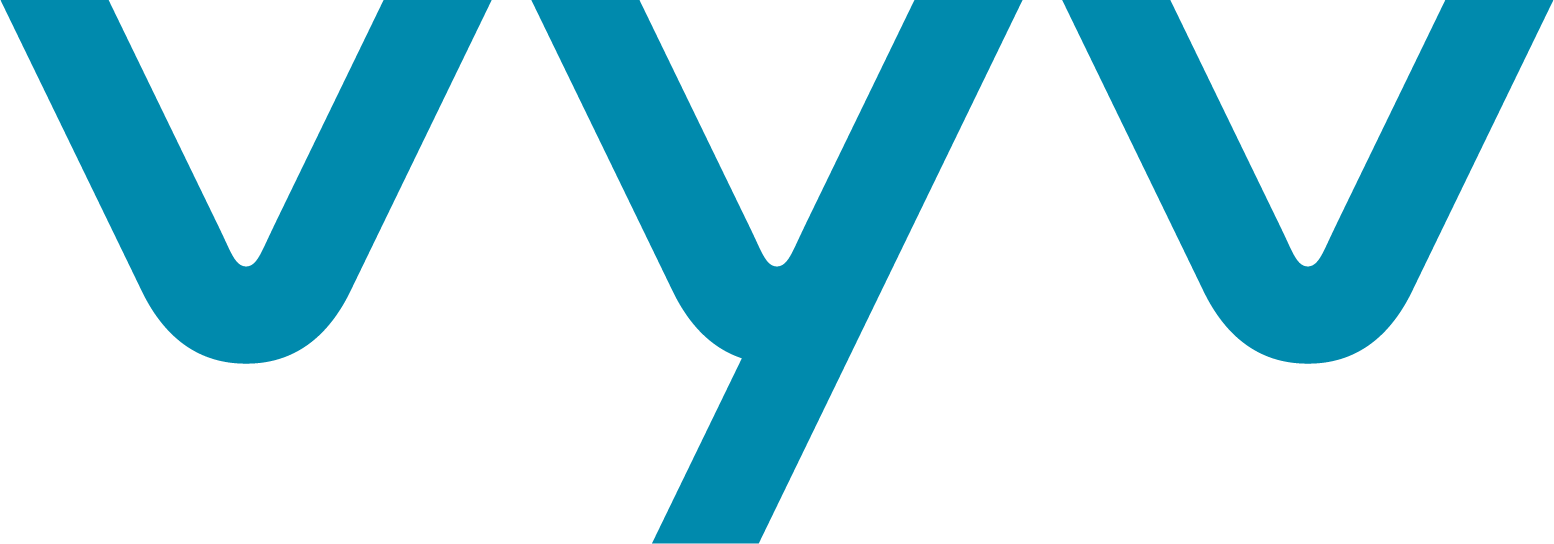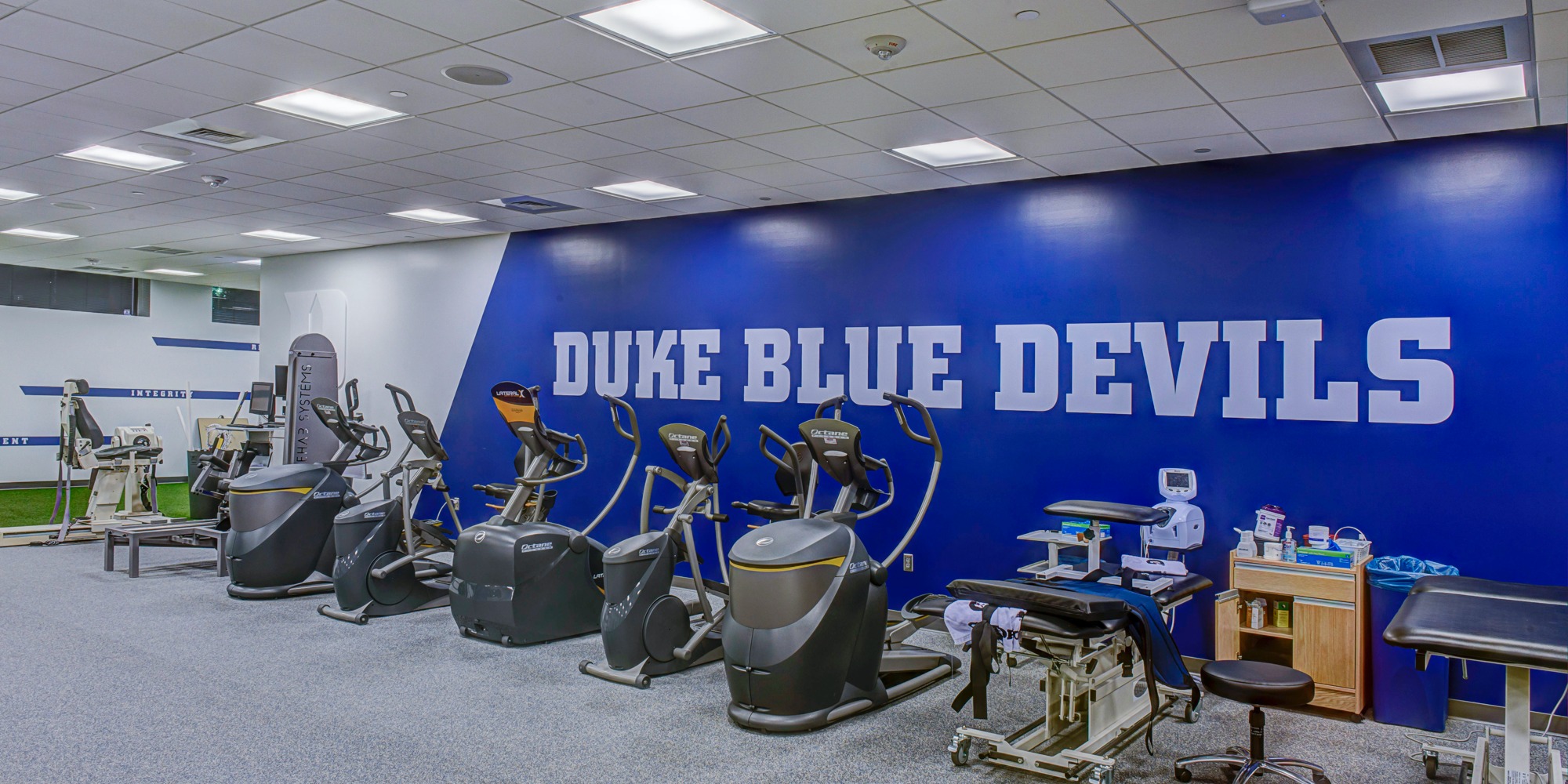Protecting athletic facilities from surface bacteria is an ongoing challenge for athletic directors and facilities managers in training rooms, locker rooms, gyms and fitness centers. The constant stream of athletes, trainers, personnel and spectators in and out of these facilities creates environments conducive to the proliferation of microorganisms on surfaces . Even after routine cleanings, bacteria are continually reintroduced and not all nooks and crannies are easily reached allowing these microbes to continue their growth cycles and replication night and day. Continuous-use antimicrobial light, used in conjunction with or as an alternative to UV light, is an innovation that creates cleaner facilities. This new antimicrobial technology works non-stop, around the clock to kill* bacteria and stop the growth of these microbes on equipment and surfaces with proven results.
Duke University was the first athletic program to partner with Vyv (formerly Vital Vio) in 2017 when they installed this technology in several of their athletic facilities. As reported in Sporttechie, Duke looked at different solutions for years trying to find a good balance between efficacy, ease of use and the opportunity for unlimited and constant use while athletes workout before choosing Vyv technology according to Bob Weiseman, Duke’s Associate Director of Athletics/Athletic Facilities, Game Operations and Championships. Mr. Weiseman said: “Duke Athletics is always looking for proactive ways to help protect our student-athletes and staff. We are delighted to install Vital Vio’s (now Vyv’s) first-class product in our athletic facilities as we build and renovate spaces.”
Colleen Costello, Vyv CEO and co-founder explained why it was a such natural application: “Over time, we noticed a rise in community-acquired infections outside of healthcare, particularly in athletics. There have been a number of stories of collegiate and professional athletes sidelined by infections due to the workout environments that they’ve been using.” In fact, according to Mayo Clinic, skin infections in athletes account for up to 10 percent of time-loss injuries in sports and can cause serious illness. Probably the most feared is caused by a bacterium called MRSA, or methicillin-resistant staphylococcus aureus, because of its known resistance to antibiotics, its prevalence in sports and its serious consequences for athletes.
According to a study in the Journal of Environmental Health, many surfaces in athletic and training facilities harbor MRSA including whirlpool areas, treatment tables, locker room surfaces, and athletic equipment. To see how much MRSA was still prevalent in these spaces even when they were being regularly cleaned with traditional cleaning methods, researchers collected samples from 9 surfaces in 7 high schools over 4 months. The result: Despite regular cleaning, MRSA was still found in all 7 sites, illustrating the need for solutions that could fill the void left behind by traditional cleaning approaches.
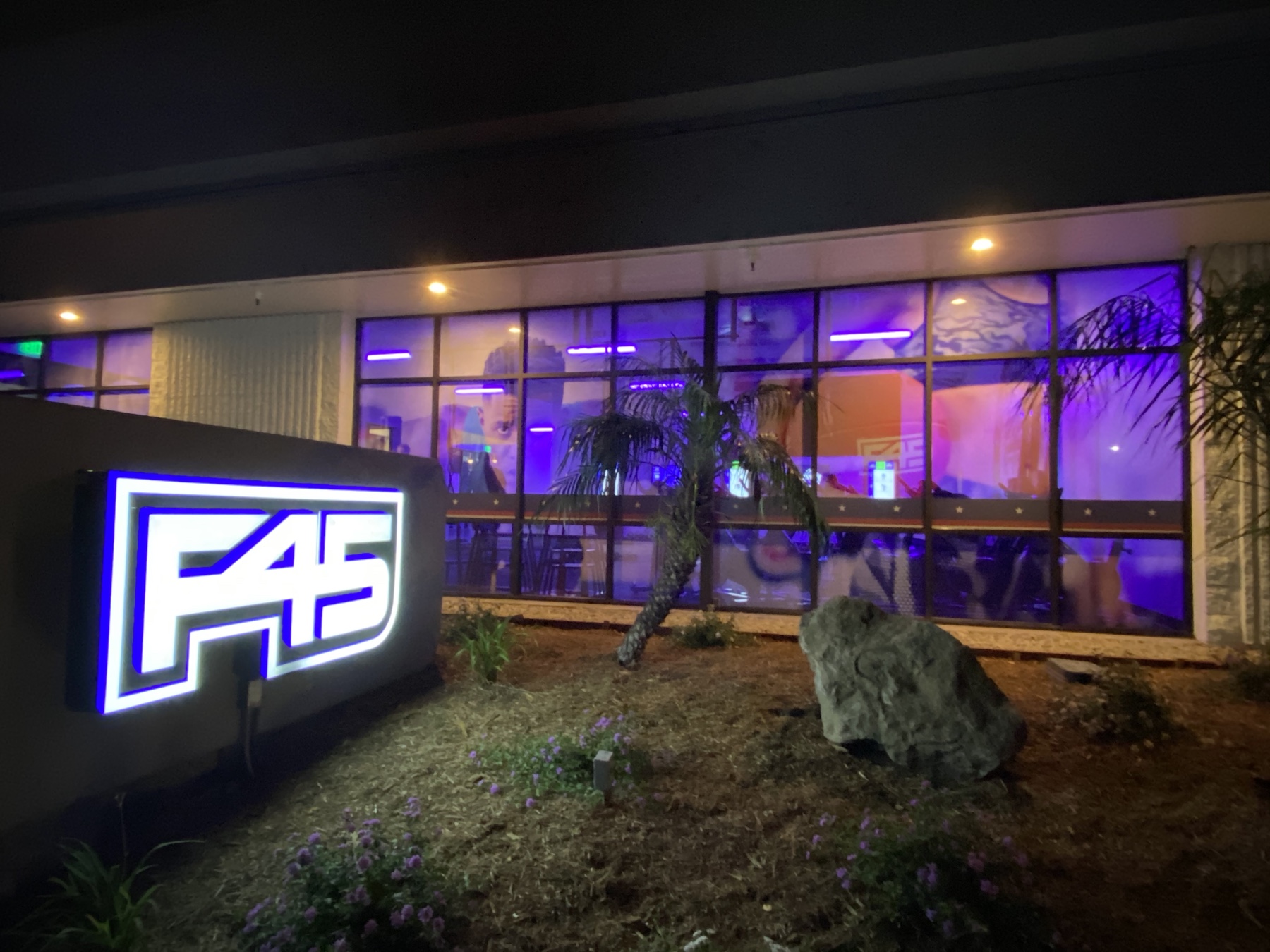
How Vyv Antimicrobial LEDs Stop the Growth and Kill* Bacteria In Sports Facilities
Antimicrobial LED technology is a newer class of clean light technology that harnesses its microbial killing* power from the visible light spectrum outside the UV light spectrum and can be used as an alternative to UV light. Vyv’s LED technology is specifically engineered to produce an abundance of light in a range that has been shown to both kill* and prevent the growth of bacteria, fungi, yeast, mold, and mildew. It is used in overhead lighting fixtures to kill* certain microbes in a broad array of settings from surgical suites and subways to food processing plants and fitness centers. It can also be embedded in other technologies or devices like inside humidifiers or behind elevator buttons, giving those devices an antibacterial action.
Continuous-use antimicrobial LEDs key benefit is that it can be used around people and on any surface 24×7. Unlike UV light, there is no limit to the amount of exposure because these lights do not have an impact on human DNA. This means the technology can be used constantly for a new kind of continuous environmental protection.
The nature of most cleaning strategies is intermittent, so if a space is cleaned periodically by some other methods, (UV light, wiping with bleach or cleaning agents and other approaches) the space is ‘clean’ until new microbes are reintroduced by people entering the room. Using round-the-clock technology continuously reduces the growth and build-up while increasing protection. This is especially important in high-traffic and high-touch spaces like athletic facilities. This benefit alone explains why there has been such a rapid increase in the adoption of Vyv technology in athletics programs and sports facilities such as those at Arizona State University, NHL’s Minnesota Wild and Seattle Kraken, NFL’s Cleveland Browns, Virginia Tech and many other sporting facilities.
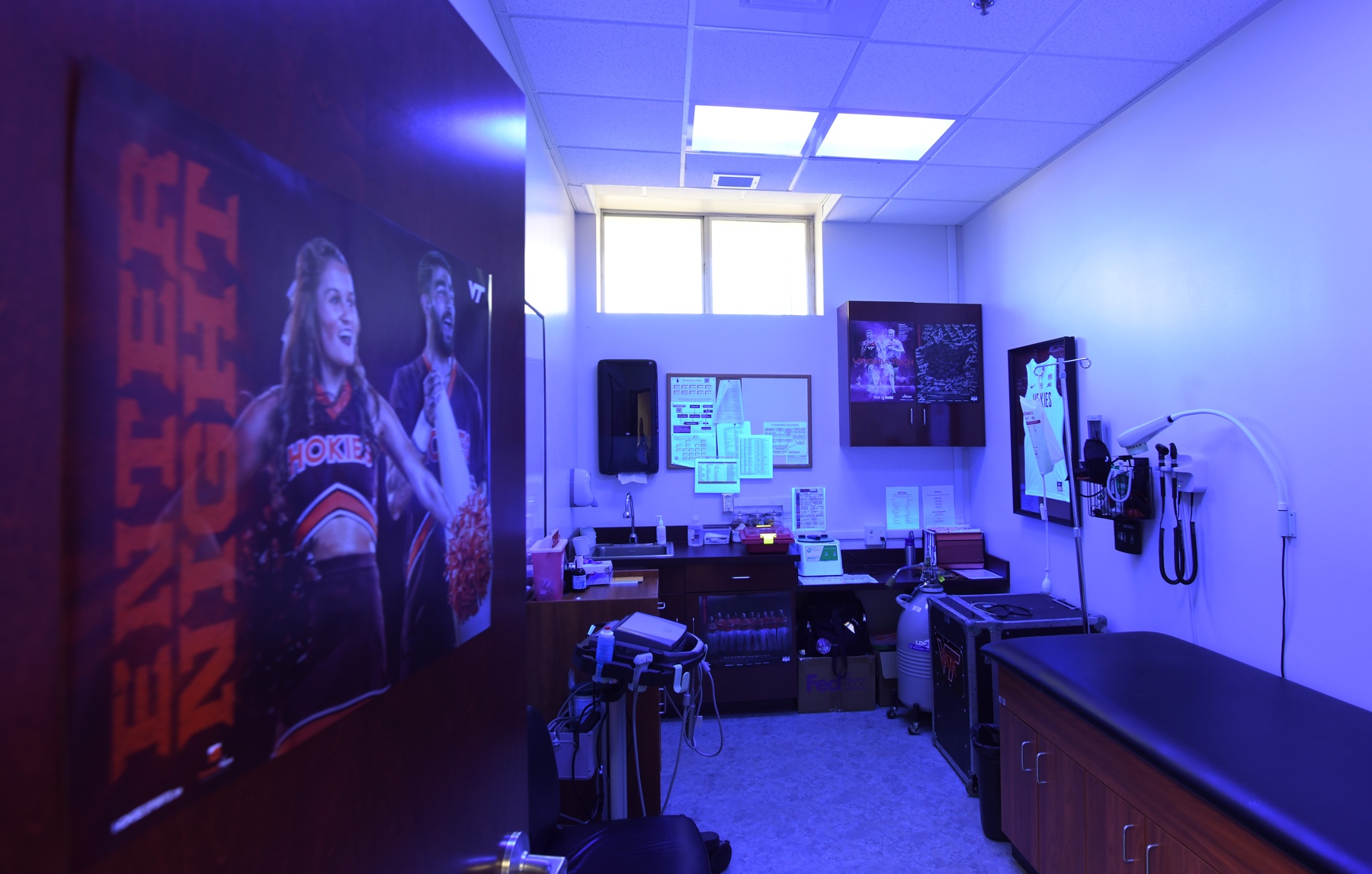
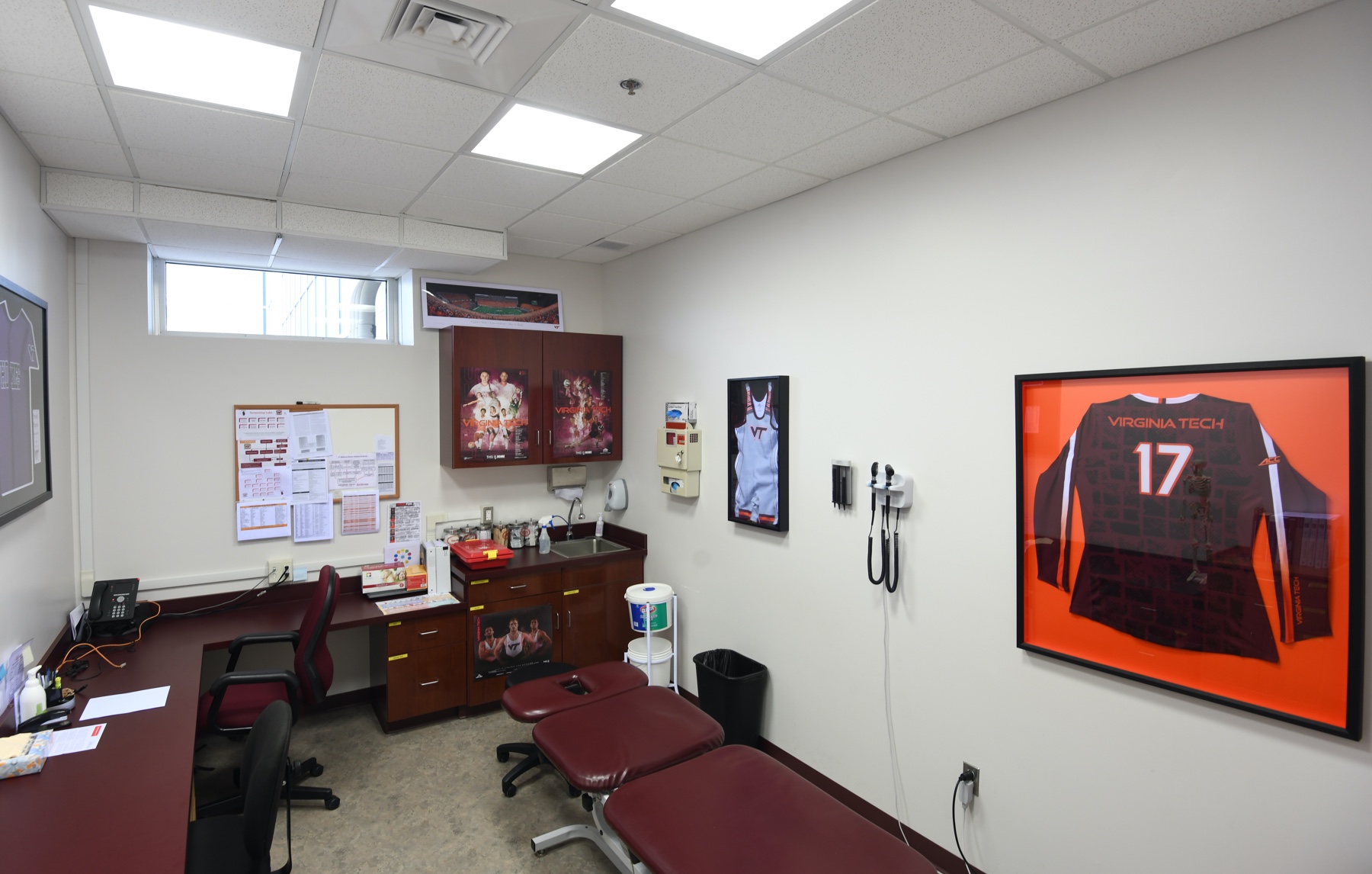
Virginia Tech Puts The ‘Tech’ Into Protecting Athletes
Virginia Tech has been using innovative tools for years to proactively mitigate the risks associated with surface contamination in their training facilities. While they did not have a history of getting hit with MRSA outbreaks or similar, they saw enough of this elsewhere to know they needed to be proactive. Dr. Mark Rogers, one of the team physicians and Chief Medical Officer, explains why they’ve installed Vyv antimicrobial lighting in their physician suites in the sports medicine facility, which is part of the training room, “We don’t have all the contaminants that maybe the hospital would have, but we’ve certainly got a lot of similar contaminants that are coming around day to day. We’ve got a lot of traffic through the area, so if we can mitigate some of that, it’s a real benefit.”
Mike Goforth, Head Athletic Trainer and Associate Athletic Director for Sports Medicine described the commitment Virginia Tech has made to protecting athletes and staff. “We have a proactive facility administrator at our place who brought the concept to us and was willing to spend the money and resources on doing it. It was a no-brainer because we’ve done studies throughout our facility to identify what’s on surfaces just from normal living. And it’s kind of scary. So, we’ve been aware the risk is out there, and we try to keep from getting hit.”
Mike points out another benefit: “We also use these lights as a recruiting tool to show our kids and their parents that we do care enough to look at it holistically, so they can see what we do to keep them safe.”
Mark adds: “High touch areas now get a lot more attention because of COVID. We were proactive about those things before, which has been good. We’re also pretty good about chemical cleaning but if we can avoid some of the chemicals by using a different mechanism or a different way, that’s much better.”
Antimicrobial LEDs Fill the Void Left by Traditional Cleaning
Ed Bosco, PE Managing Principal at ME Engineers, has designed buildings of all types for over 25 years. His team has worked on many of the world’s best-known professional sports and entertainment venues in the US and abroad. Ed and his team have long considered the design of buildings from a holistic standpoint, this approach has come into focus even more since COVID became a consideration. They have identified more than 50 carefully reviewed strategies that they apply to the design of spaces to keep health and wellness at the top of mind. “While Antimicrobial LED technology does not have a direct real-time impact on COVID transmission it has use as a passive strategy for improving surface cleanliness.”
Ed sees the continuous and passive nature of antimicrobial LED technology as an opportunity to fill the voids left by intermittent cleaning. “The effectiveness of manual surface cleaning is continuously dependent on the quality of the process and the ongoing execution. If you have a system that continuously addresses the bacterial load by reducing growth on surfaces, your baseline levels drop and your reliance on the perfect execution of manual cleaning is a little bit reduced.”
Ed continued, “If there is a passive process working to disinfect surfaces before and after they are touched, the risk of surface transmission will be reduced.”
For sports facilities and other high traffic, high touch public spaces, antimicrobial LED technology is a great added layer of cleanliness that makes any approach to cleaning spaces much more thorough and comprehensive. And all with just the flick of a switch.
*MRSA and E. coli showed 90%+ reduction in controlled laboratory testing in 24 hours.
